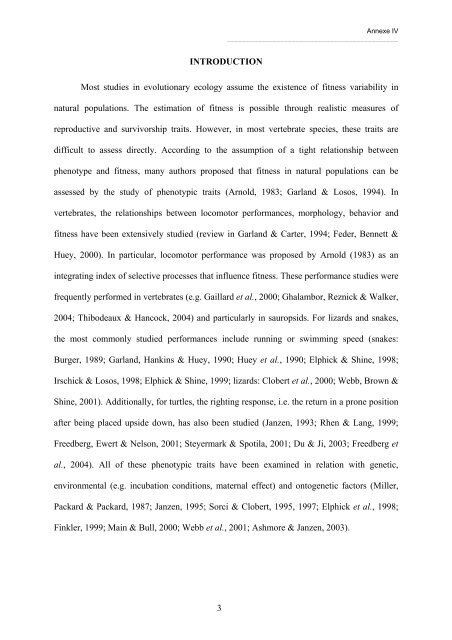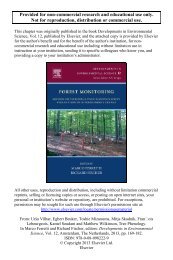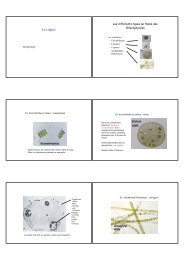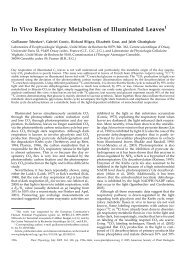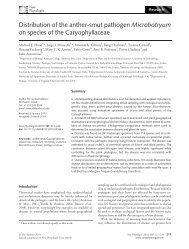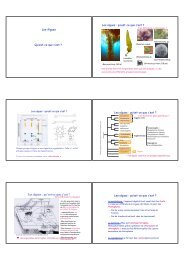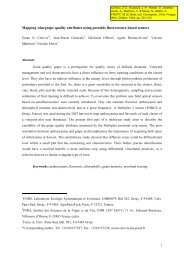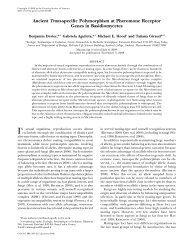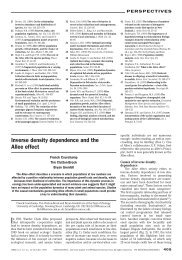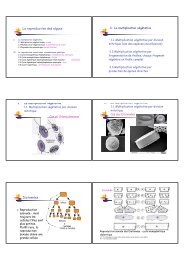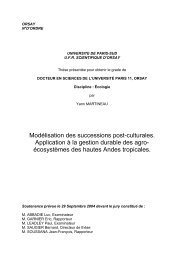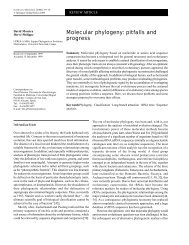Premiers - Outil de Suivi des Contrats
Premiers - Outil de Suivi des Contrats
Premiers - Outil de Suivi des Contrats
Create successful ePaper yourself
Turn your PDF publications into a flip-book with our unique Google optimized e-Paper software.
Annexe IV<br />
_____________________________________________<br />
INTRODUCTION<br />
Most studies in evolutionary ecology assume the existence of fitness variability in<br />
natural populations. The estimation of fitness is possible through realistic measures of<br />
reproductive and survivorship traits. However, in most vertebrate species, these traits are<br />
difficult to assess directly. According to the assumption of a tight relationship between<br />
phenotype and fitness, many authors proposed that fitness in natural populations can be<br />
assessed by the study of phenotypic traits (Arnold, 1983; Garland & Losos, 1994). In<br />
vertebrates, the relationships between locomotor performances, morphology, behavior and<br />
fitness have been extensively studied (review in Garland & Carter, 1994; Fe<strong>de</strong>r, Bennett &<br />
Huey, 2000). In particular, locomotor performance was proposed by Arnold (1983) as an<br />
integrating in<strong>de</strong>x of selective processes that influence fitness. These performance studies were<br />
frequently performed in vertebrates (e.g. Gaillard et al., 2000; Ghalambor, Reznick & Walker,<br />
2004; Thibo<strong>de</strong>aux & Hancock, 2004) and particularly in sauropsids. For lizards and snakes,<br />
the most commonly studied performances inclu<strong>de</strong> running or swimming speed (snakes:<br />
Burger, 1989; Garland, Hankins & Huey, 1990; Huey et al., 1990; Elphick & Shine, 1998;<br />
Irschick & Losos, 1998; Elphick & Shine, 1999; lizards: Clobert et al., 2000; Webb, Brown &<br />
Shine, 2001). Additionally, for turtles, the righting response, i.e. the return in a prone position<br />
after being placed upsi<strong>de</strong> down, has also been studied (Janzen, 1993; Rhen & Lang, 1999;<br />
Freedberg, Ewert & Nelson, 2001; Steyermark & Spotila, 2001; Du & Ji, 2003; Freedberg et<br />
al., 2004). All of these phenotypic traits have been examined in relation with genetic,<br />
environmental (e.g. incubation conditions, maternal effect) and ontogenetic factors (Miller,<br />
Packard & Packard, 1987; Janzen, 1995; Sorci & Clobert, 1995, 1997; Elphick et al., 1998;<br />
Finkler, 1999; Main & Bull, 2000; Webb et al., 2001; Ashmore & Janzen, 2003).<br />
3


